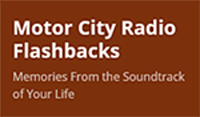 Detroit Modern Country WDEE Highlighted at CMA Meet in Nashville
Detroit Modern Country WDEE Highlighted at CMA Meet in Nashville
 NASHVILLE — The format of WDEE in Detroit is not focused just on acquiring the local country music audience of the city, but “the continuing swing of people to country music,” Chuck Renwick, national program director for Storer Broadcasting, told an audience here of radio executives during an annual broad- caster’s meeting of the Country Music Association. The CMA meeting was held here Saturday (October 17) in conjunction with the yearly birthday celebration of radio station WSM.
NASHVILLE — The format of WDEE in Detroit is not focused just on acquiring the local country music audience of the city, but “the continuing swing of people to country music,” Chuck Renwick, national program director for Storer Broadcasting, told an audience here of radio executives during an annual broad- caster’s meeting of the Country Music Association. The CMA meeting was held here Saturday (October 17) in conjunction with the yearly birthday celebration of radio station WSM.
“We’d heard of so many radio stations doing variations of country music that we felt there was no right way or no wrong way,” Renwick said. He pointed out that Storer was a little reluctant to take the station country because of its failure with KGBS in Los Angeles with country music programming, but that “we’d got some experience programming country music on WCJW-FM in Cleveland.”
At the outset, WDEE was programed record-for-record until the air personalities got better acquainted with the format; now they build on their own shows. Another most important factor in building not only a stronger rapport with country music, but with their audience, is that deejays get on the phones with their listeners for 20-25 minutes after they get off the air. This also builds up a person-to-person relationship with the listeners, Renwick said. He spoke of a consistent flow of information, kept brief, aired on the station and played tapes illustrating not only the sound of WDEE, but its jingles, personalities, and music.
In Back Door
Also speaking on programming during the session was Bill Ward, general general manager KBBQ in Burbank (Los Angeles). Ward said that 95 percent of radio stations now playing country music “came in the back door . . . they’d tried everything else.” He said that all three of the last stations were this type . . . and that all became successes with country music. The best type of air personality for today’s country station, he felt, was a Top 40 jock out of the midwest because “they grew up in a country environment and know how to pronounce Red Sovine’s name, know who Bob Wills is.”
He felt that the typical rock format is about as refined as you can get it and that the same thing is happening in country music today. But perhaps country radio stations “ought to take stock – pay some dues – make an investment back into country music in general.”
Irving Hill, general manager of WCMS in Tidewater, Va., spoke of consulting with two radio stations, both in the major 50 markets of the nation, and found that the manager not only didn’t like country music, but didn’t listen to his own station.
Dan McKinnon, owner of KSON in San Diego, talked of various management problems at the government level then later delved into editorials, pointing out that the on-the-air broadcast of an editorial is only 20 percent of the work; KSON also mails out copies of its editorials to some 500 congressmen, business leaders, and members of the press. He also spoke on a KSON drug-abuse project.
Ads Raise Sales
Bill Hudson of Bill Hudson and Associates, spoke on how effective use of billboard advertising boosts spot sales on WKDA in Nashville. The station features client’s ad along with a station promo on various billboard signs in town. This same method can be used effectively with bus posters, he said.
Dorothy Kuhlman, promotion and publicity expert from station WHOO, detailed all of the various promotional methods used by the Orlando station, both on-the-air and off-the-air. Moderator George Crump, president of WCMS in Tidewater, Va., said there was a possibility of a second yearly Country Music Association radio meeting, if members wanted it. END
_______________
Information credit and news source: Billboard; October 31, 1970
![]()

